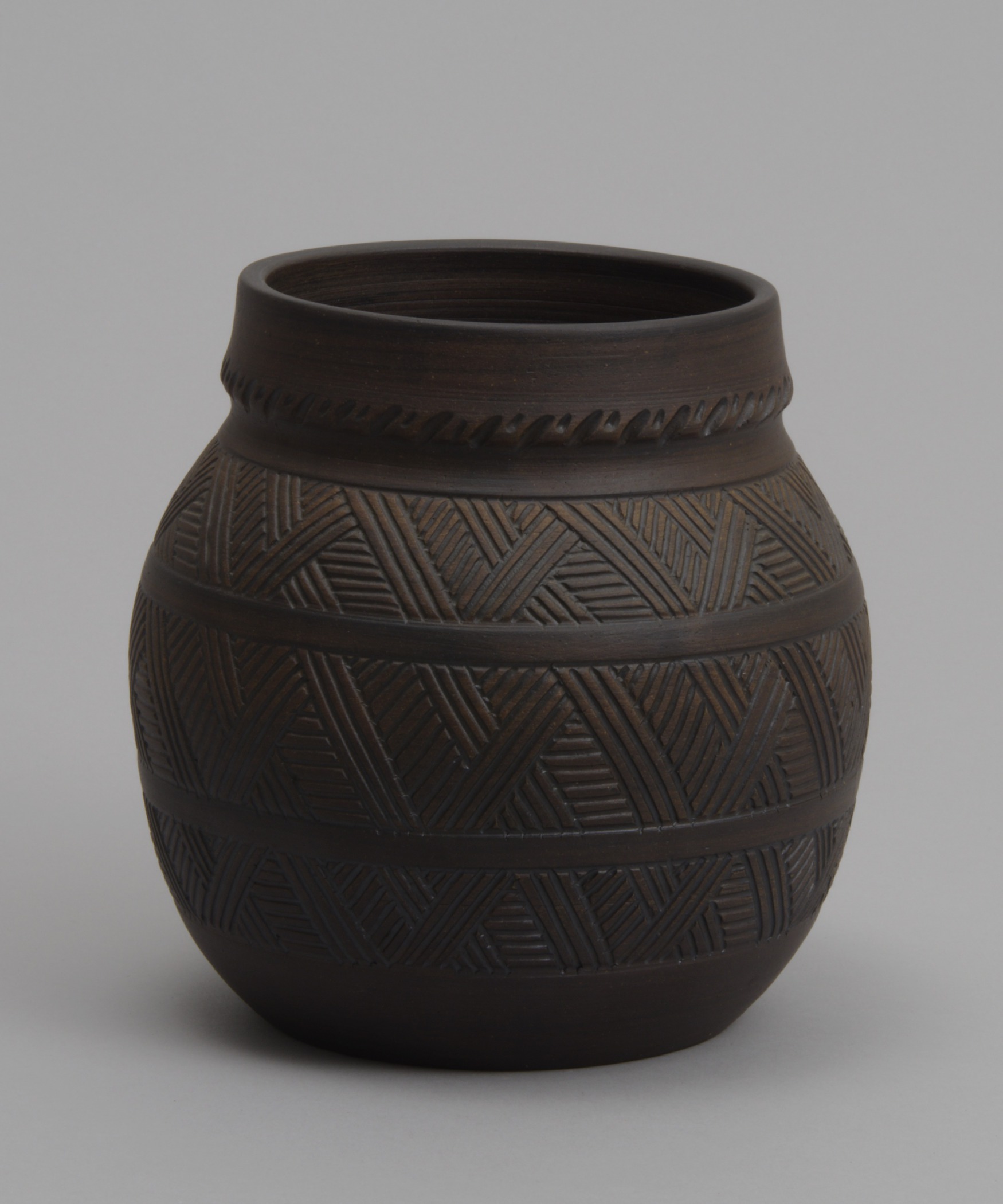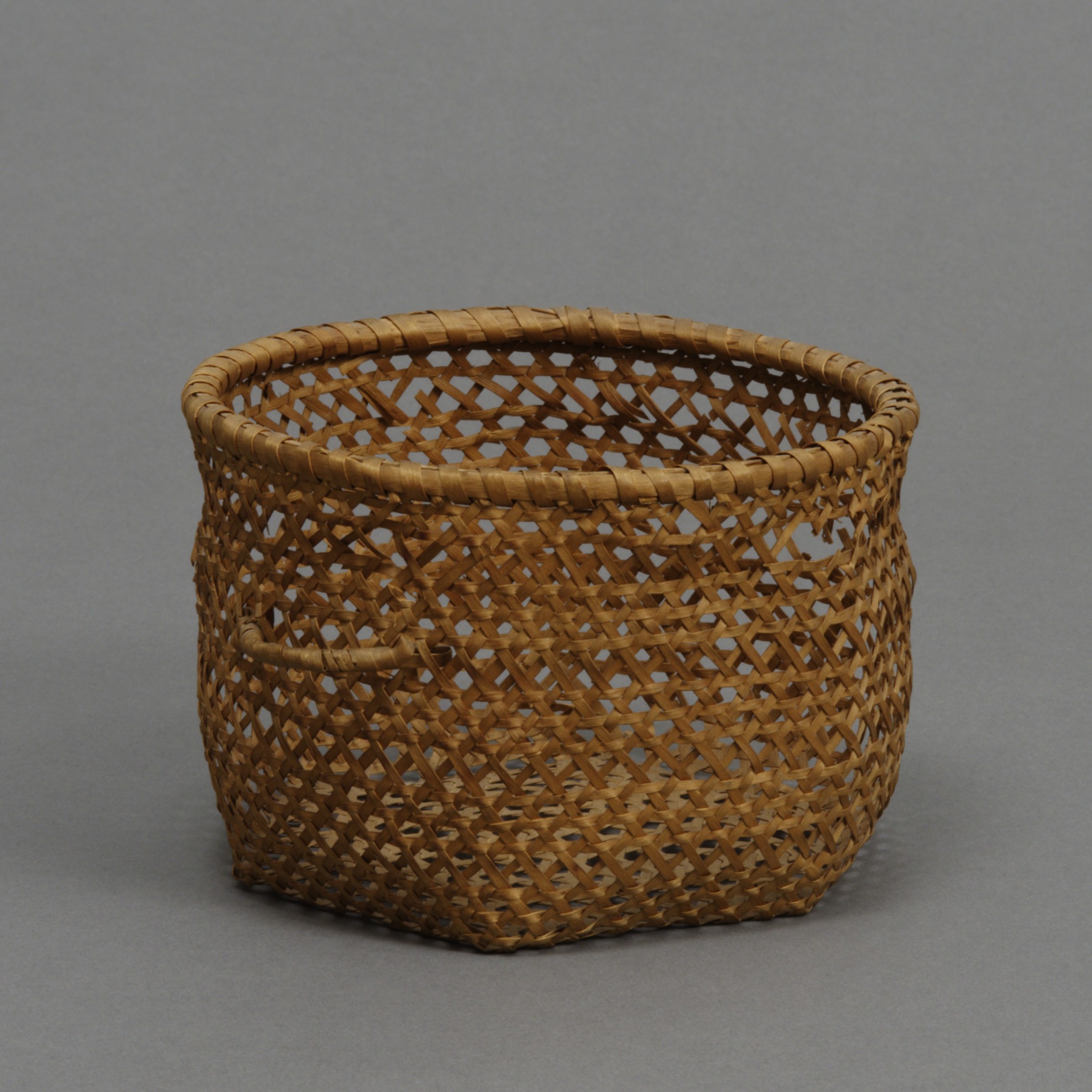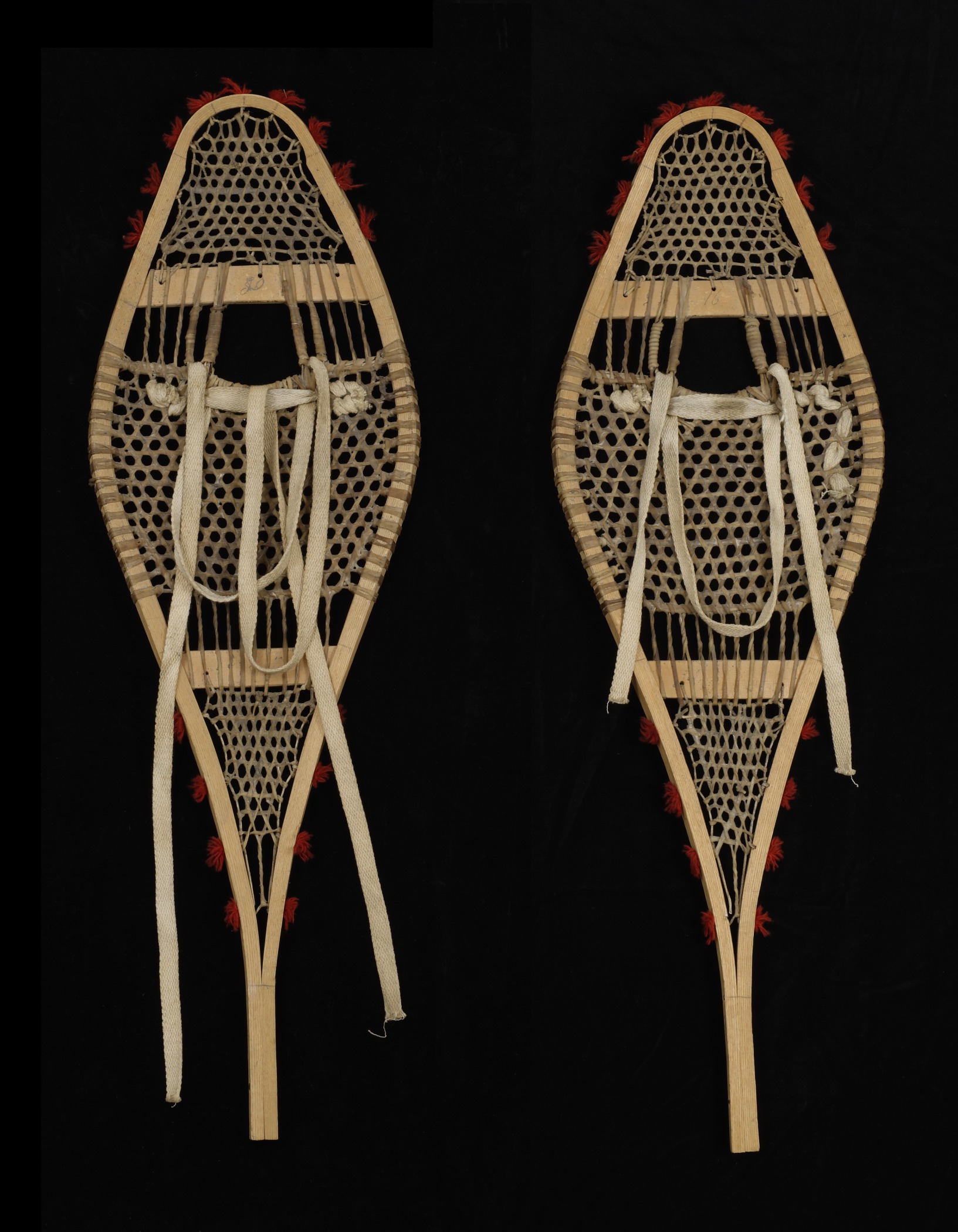Louis Gill, Canadian (Abenaki [Abnaki/Wabanaki]), 1856–1923
Birch bark canoe
- Early 20th century
- Birch bark
- 168 1/2 × 32 5/16 × 12 5/8 in.
Hood Museum of Art, Dartmouth College: Gift of Sinclair Weeks; 162.27.14802
visibilityLook & DiscussOnce the highway system of the Northeast, waterways provided the easiest and most efficient way to travel—thanks to the birch bark canoe. For thousands of years, Woodlands hunters built canoes from birch bark, cedar, and spruce roots. Canoes were stable, nimble, durable, and light enough for one person to carry over land. Flipped over, they could even provide shelter.
Canoes were far superior to European longboats for inland travel. The first Europeans marveled at the ease with which native people circled around their heavy, cumbersome boats.
Canoes were once critical tools for hunting, fishing, migrating, and trading. Later, both natives and non-natives used them for recreational hunting, fishing, and sightseeing. Canoes are still used today.
Louis Gill, an Abenaki elder, experienced hunter, and canoe builder from Odanak, Quebec, built this boat. He made it for the members of a Canadian hunting and fishing club in the early 20th century.
explore the object
A traditional Abenaki canoe is built from one large sheet of birch bark collected from the trunk of a tree. Old growth forests once contained trees that were much larger than birch trees are today. It is becoming more and more difficult to find the materials to build these canoes.
A traditional canoe builder work from the outside in. He uses the birch bark inside out, with the rough part on the inside of the canoe and the smooth inner bark on the outside. This helps to make the canoe watertight. First, he soaks the bark in hot water to make it more pliable. He weights the center with rocks while lashing the sides to strips of wood that form the gunwhale, or upper edge, using spruce roots. He then wedges cedar planking underneath the gunwhale, tight against the bark. Throughout the process, he continually treats the canoe with hot water to keep the bark pliable. He uses spruce roots to sew on additional pieces of birch bark to fill any gaps or holes, then gums all the seams with rosin, a type of sticky residue made from pine tree sap and lard, or animal fat. Finally, he treats the whole canoe inside and out with oil.
Meet the Artist
Louis Gill was born in 1856 and built this canoe shortly before he died in the early 1920s. He was, like many of the inhabitants of Odanak, a village in the Abenaki First Nations reserve in Quebec, Canada, most likely a descendant of one of original inhabitants of the northern and central New England states. Many Wabanaki people migrated to Canada in the late 17th century to escape conflicts with English settlers and sickness in their homelands. Abenaki men in Odanak made traditional native tools and served as hunting and fishing guides for visitors for many years.
learn more
Visit the virtual exhibition Follow the Guide on the website of the Abenaki Museum to learn more about the Abenaki hunters and guides of Odanak, Quebecon.
Steve Cayard, who is non-native, studies and builds Wabanaki canoes. He has developed strong ties with native tribal communities who accept his canoes as traditional. He shares his knowledge and skills to native groups who are seeking to revitalize this part of traditional Wabanaki culture.




